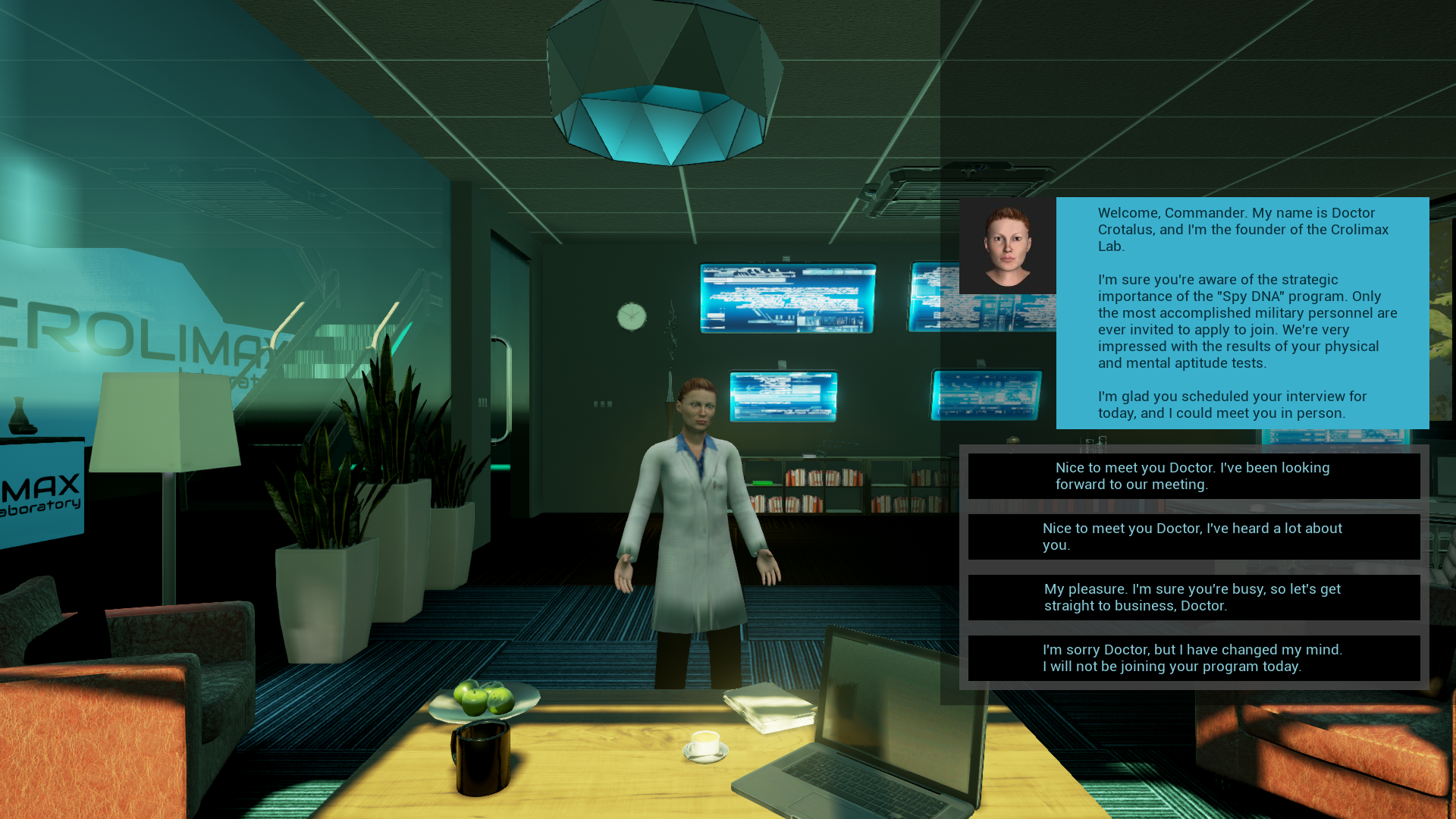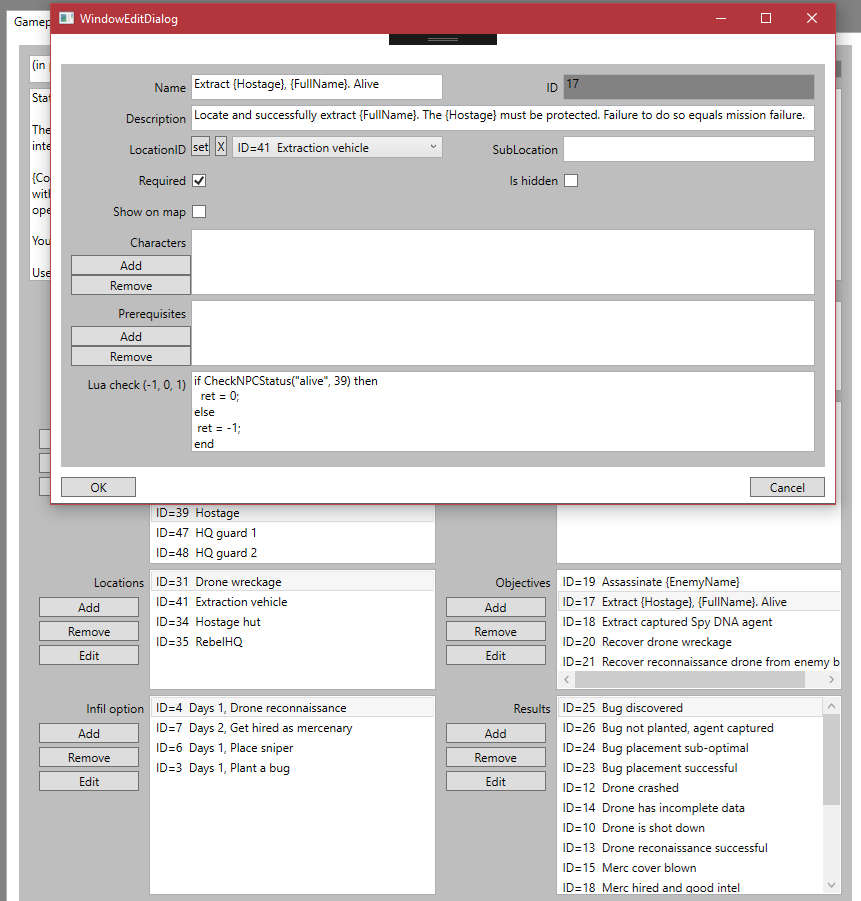By Alex Maier, writer of words
It’s been just over two years since we’ve concluded our Kickstarter campaign, without hitting our funding target. If I said that we were completely unfazed by this setback, I’d be lying, but despite the disappointment we decided to continue on with the project anyway.
As the new demo and early access are drawing closer, I felt a bit nostalgic, so I began to compare our actual progress to the goals we set out to hit two years ago. And you know what? That made me feel good. Aside from having to push out our release dates, we’ve stayed largely on course.
Also, it helps to remind ourselves just how far we’ve come in those two years. So let me take you along for a trip down memory lane, beginning with the Kickstarter video.
First off, I gotta say, thank you Denis for kicking my butt to create our current logo, it is definitely better than what we had back then.
Spy DNA screenshot August 2016
Spy DNA screenshot, August 2018
We’ve also improved the UI to make it look more like a sci-fi game. Gone are the sharp rectangles and mostly gray-on-gray elements, but on a deeper level, we’ve also streamlined the way our players interact with the game.
Lab tech Oxalana Guy before and after
But one of the changes most noticeable to me are our new character models, unique guns, and the look of the in-game world. Then there are things like large landscapes with literal thousands of trees on them rendered at high FPS rates, and level loading times of 10-15 seconds. In our playthrough video, you can see how quickly a 1 x 1 km map loads.
Now, let’s look at the game we’ve promised to you when we launched that Kickstarter campaign, and how we did on each point.
Super-realistic combat and AI make you feel like a real super-spy on a mission
If you watch our latest mission playthrough demo, you’ll see the realism in action, and in a little bit of time, you’ll be able to try it out yourself when we release the new demo
Realistic weapons behaviour, aiming, and cover
We account for character stats, time spent aiming and recoil when calculating shot accuracy, and we take projectile velocity and total energy plus aerodynamic drag when calculating damage. We use actual line of sight for determining which parts of the target are in cover and which can be seen and shot at.
He's got his heart in the right place, so you can aim for it
Hit points replaced with anatomical damage
We’ve got per-polygon collisions enabled for characters, so we know where they get hit, and if the bullet has been stopped by cover or armor. We’ve additionally filled our character models with collision primitives that represent different organs and parts of the skeleton, and base the actual physical consequences of getting shot on what parts have been hit.
Dynamic turn duration based on character stats; turns execute at the same time
Yep. Got that one.
Immersive story and deep branched dialog
Okay, you’ll have to basically take me at my word on this one, but that 200-page script that I was showing off in the KS vid is still alive and kicking. It's been expanded quite a bit, and we’ve added Lua scripting support to the dialog, to make the conversations have real effect on the game.
Rich character attributes and skills allow you to create and play a character based on your own play style
While some games try to simplify everything down to just a couple stats that have to stand in for a bunch of marginally-related skill checks, we’ve gone the opposite way, providing the detail and granularity to help the player have a clear understanding of what their characters are good at.
Character creation August 2016
Character creation, August 2018
High tactical flexibility creates replay value
When we wrote this sentence, what we had in mind were static, hand-made levels where only the NPC placement and their actions would vary on each playthrough. Today, we’ve taken this idea much farther: to generating all the levels procedurally, based on mission scenarios that we create in our Editor tool. In today’s version of Spy DNA, you will have a different map each time you replay a given scenario/mission, and the mission objectives won’t alway be in the same spots, so you have to approach each mission individually.
Gratuitous picture of two Spy DNA agents shooting the same target at the same time
As you play, you will encounter two types of scenarios: storyline missions and side quests. The storyline missions will be required for you to complete the story arc, while the side quests are one-off missions that you can take (or leave) between storyline ones. Storyline missions will feature unique dialogs and allow you to develop relationships with the members of your squad, who we’ve made as different from each other while still being useful for the team, as we could.
Side quests will be based on several different scenarios, which, coupled with a unique map generated each time the scenario comes up in your intelligence screen, will provide you with hours of challenging levels to beat.
The demo will ship with only a handful of scenarios and none of the storyline missions, but you’ll see the first few story-arc levels in the early access release.
In addition, we’ve also built a few things from the stretch goal list: guns that you can customize in-game, and recorded voice-over “barks” for our squad.
So while we’re going to be shipping the game quite a bit later than originally planned, we’ll be shipping the game we promised we would, and in some aspects, it will even be a better game than we ourselves could anticipate back in 2016.
Let me wrap up here before I pat ourselves on the back too much. Please subscribe to our newsletter and follow us on social media to make sure you know when that demo will be ready for you to download and try out.








